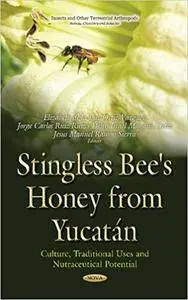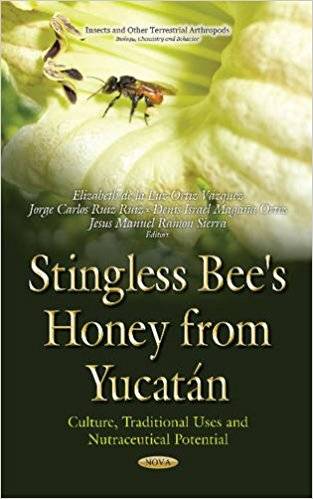Stingless Bee's Honey from Yucatán: Culture, Traditional Uses and Nutraceutical Potential
Nova | English | 2016 | ISBN-10: 1634842219 | 180 pages | PDF | 3.57 mb
Nova | English | 2016 | ISBN-10: 1634842219 | 180 pages | PDF | 3.57 mb
by Elizabeth De La Luz Ortiz Vazquez (Editor), Jorge Carlos Ruiz Ruiz (Editor), Denis Israel Magana Ortiz (Editor), Jesus Manuel Ramon Sierra (Editor)
Chronic diseases and microbial infections are increasing threats for human health. There are numerous natural compounds that can contribute to control acute infections caused by bacteria and fungi. Also, these bioactive molecules can prevent several disorders like hypertension, diabetes and hypercholesterolemia. Honey has been reported as an antimicrobial substance in the treatment of skin injuries, stomach diseases and fungal colonization of mucosa. In this sense, the high impact of antibacterial effect in honey has been demonstrated in the inhibition of strains that have resistance to antibiotics. Some species with antibiotic resistance that have been reported as susceptible to honey compounds are Staphylococcus aureus, Escherichia coli and Mycobacterium tuberculosis. In a similar way, honey is a natural source of antioxidant compounds that promotes several aspects of human health like blood pressure stabilization and control of reactive oxygen species, in synergy with other compounds present in honey; antioxidants can kill opportunistic pathogens that could proliferate in diverse tissues and organs. However, the current studies of honey have been focused in one bee species, Apis mellifera; this social insect is the predominant producer of honey around the world, and it is used as a pollinator of several crops. In contrast to this predominance, the study of native bees, like stingless bees, remains poorly explored. The initial reports have documented the potential of these honeys in the treatment of burn injuries, diabetic complications and cataracts. Also, this honey is highly effective in the control of several bacterial and fungal infections recalcitrant to available antibiotics. All of these results make this organic product very demanded in many nations around the globe. The purpose of this book is to describe the ancient uses of Melipona beecheii honey in the Mayan culture before the arrival of Spanish conquerors, the present state of the melipona cultures in the inhabitants of Yucatan Peninsula, the physical, chemical and nutraceutical properties of this valuable product, relevant aspects of the quality control and the more exciting discoveries about the medicinal properties of melipona honey. Without a doubt, the information contained in this book would contribute to promote the conservation of stingless bee species and to encourage the fair trade of the honey produced by these species.
Series: Insects and Other Terrestrial Arthropods: Biology, Chemistry and Behavior



